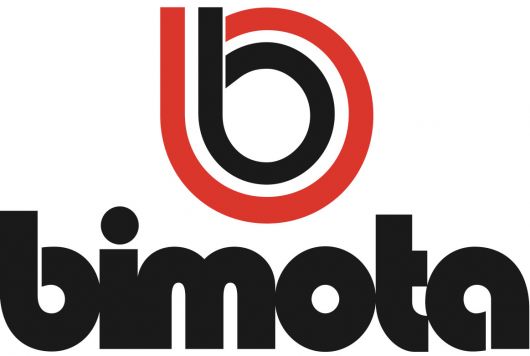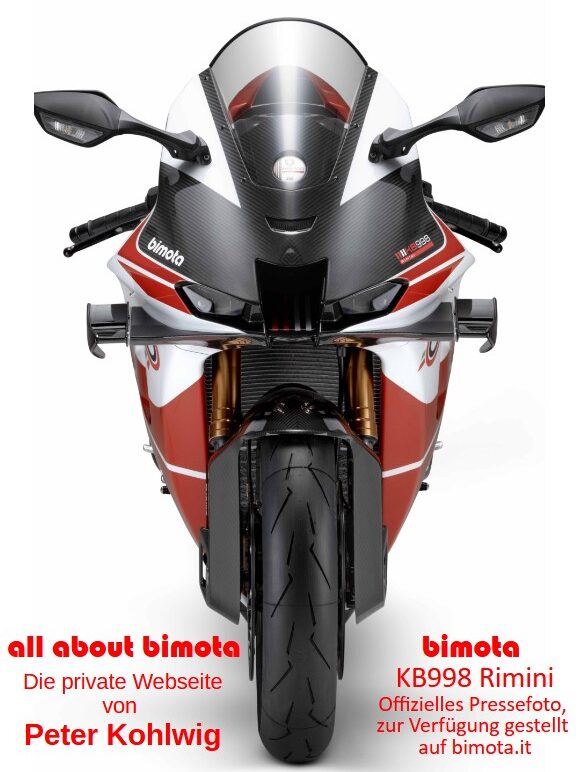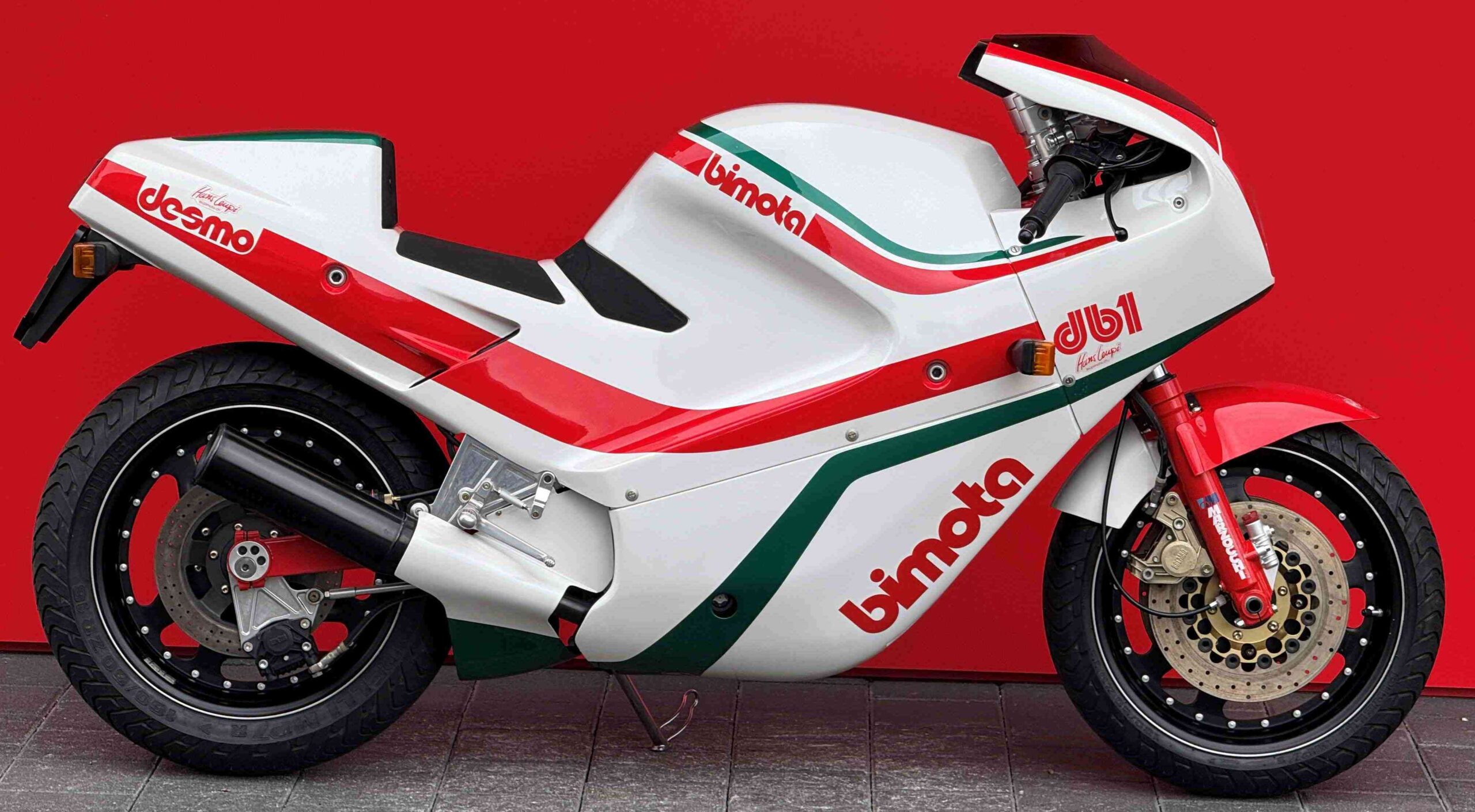
| Designer | Frederico Martini | First presentation | Milan 1985 |
| Production period | 1985 – 1987 | Productuion numbers | 400 DB1 incl. 5 kits 63 DB1 S 53 DB1 J 400 |
| Power | 46 KW (63 PS) DB1 S 51 KW (70 PS) | Displacement | 748 ccm |
| Topspeed | 205 km/h | Weight | wet 179 kg dry 160 kg |
| Price | DM 24.000 (1985) | Colours | red / white /green |
| Technical basis | Ducati 750 Pantah |
The DB1 is the first purely Italian street motorcycle from Bimota. It utilizes the technology of the Ducati 750 Pantah, featuring the 90° V2 engine that debuted in 1979. Instead of the previously common bevel gear drive, the camshafts and desmodromic valve actuation are powered by a timing belt. Despite its modest 63 hp, the DB1 is a very fast and agile motorcycle due to its low weight, aerodynamically favorable, nearly fully enclosed fairing, and small frontal area.
Beneath the fairing lies the trellis frame designed by Frederico Martini. Unlike the earlier frame constructions by Massimo Tamburini, this frame runs entirely above the engine and remains open at the bottom. The complete frame, which consists exclusively of straight chrome molybdenum steel tubes welded into rigid triangles, weighs only 6 kg.
For the first time, Bimota introduced a plastic fuel tank made of polyethylene. The reservoirs for the front brake and clutch fluid were placed on top of the fork legs to allow for a greater steering angle within the tightly fitted fairing.
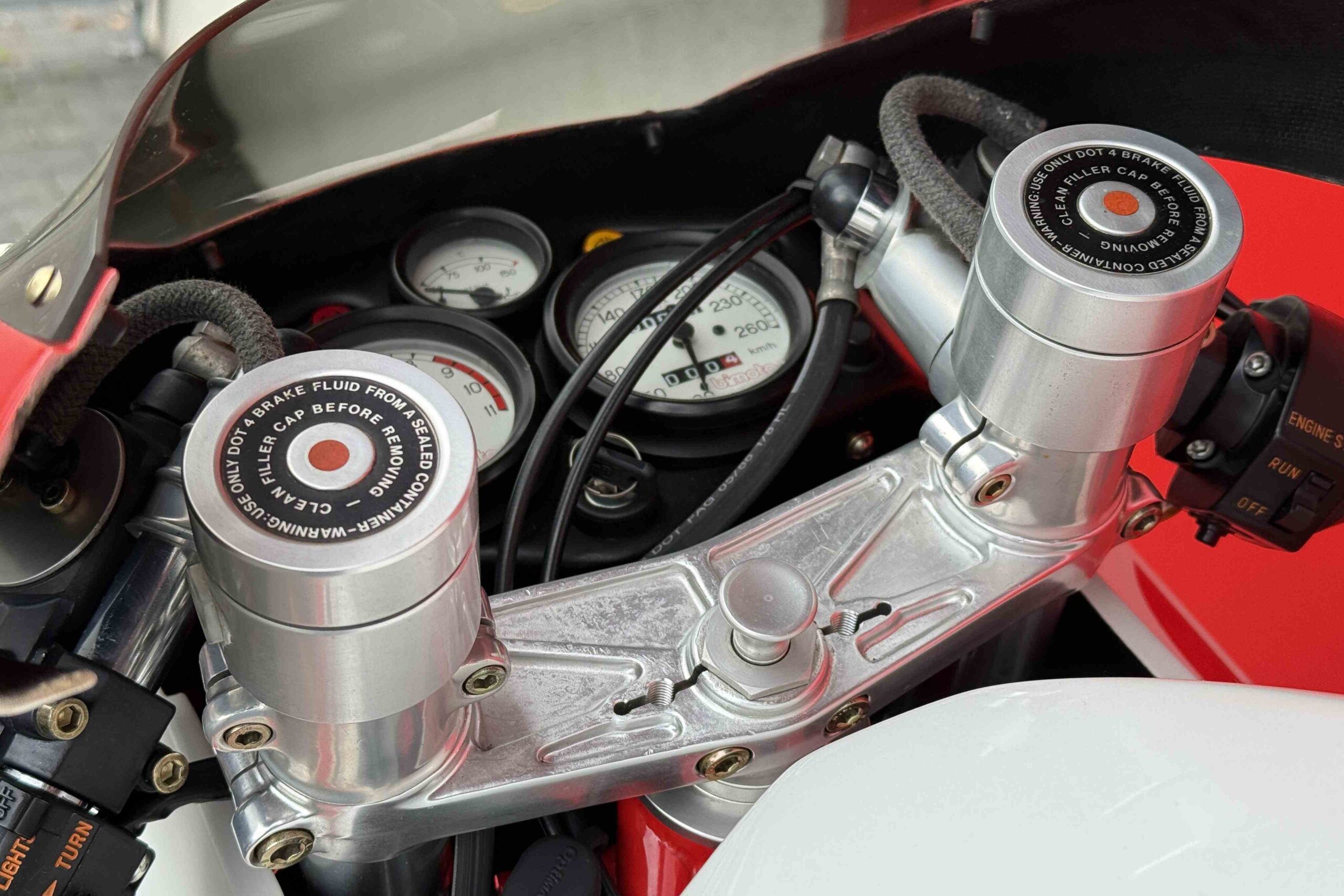
The DB1 is equipped with three-piece Bimota 16” aluminum composite wheels, measuring 3.25” wide at the front and 4.25” at the rear. The 42 mm Marzocchi M1 fork was developed specifically for the DB1. Suspension and damping are separated into individual fork legs. As is typical for Ducati, the swingarm is mounted in the engine casing. The rear features an adjustable Marzocchi central shock absorber. The braking system, sourced from Brembo, includes two 280 mm floating discs at the front and a fixed 260 mm disc at the rear. Early models featured two-piston calipers, while later models were equipped with four-piston calipers.
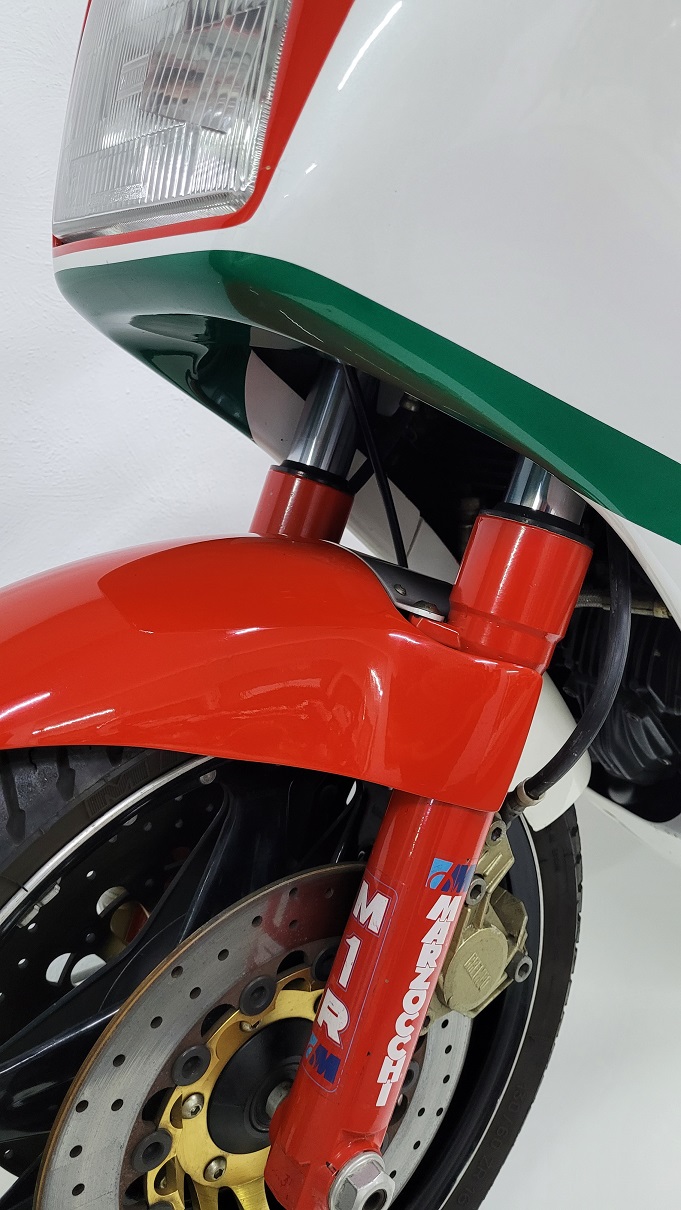
The DB1 was offered at a list price of DM 24,000, which was significantly lower than earlier models equipped with more powerful Japanese four-cylinder engines. In 1986, Bimota introduced the DB1 S at the IFMA in Cologne, priced at DM 27,700. This model featured 40 mm carburetors instead of 36 mm ones and an improved exhaust system, increasing the output to 70 hp. Apart from the “S” in the logo, the model was otherwise identical to the DB1.
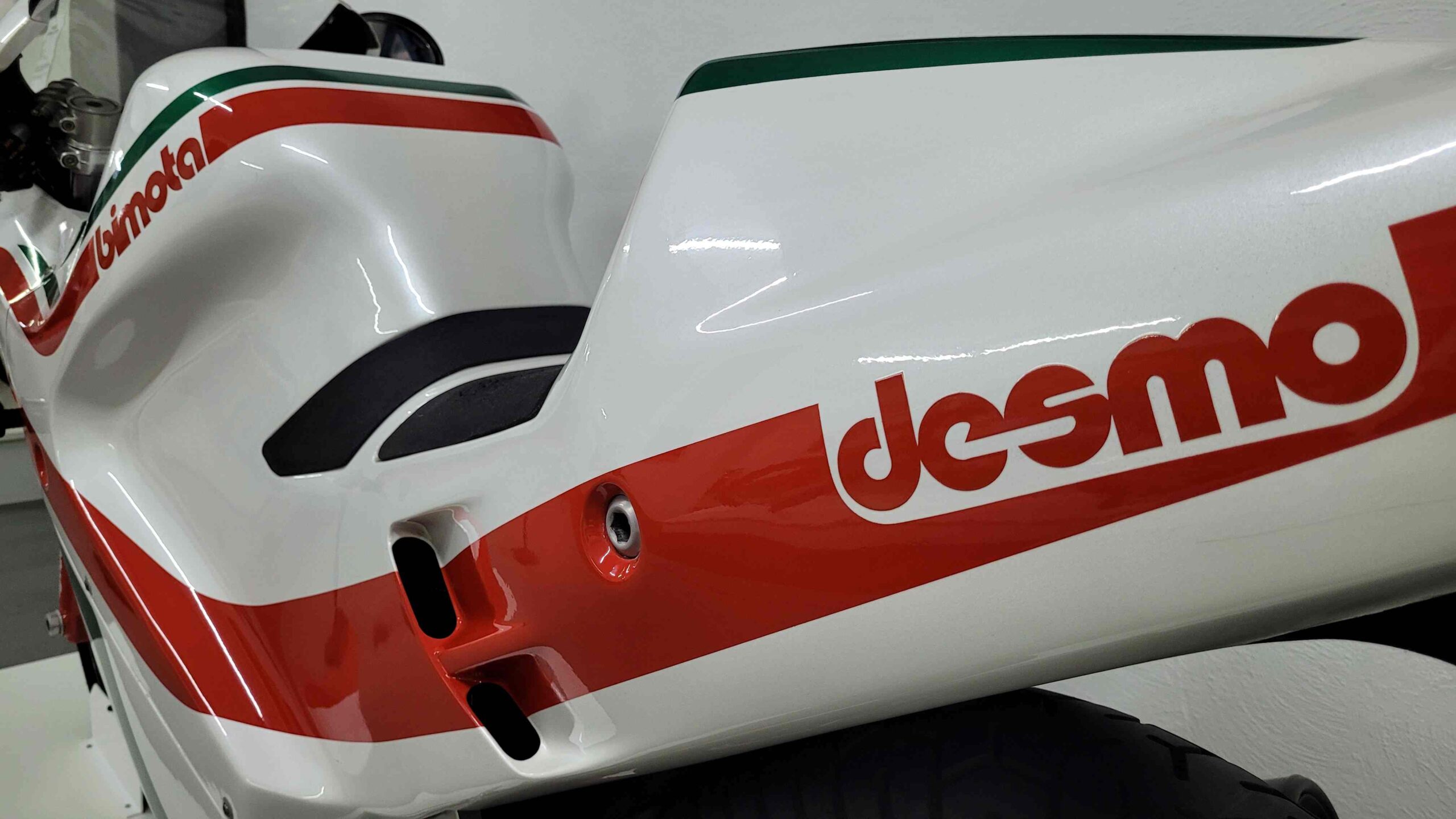
The characteristics of the DB1 were summarized in a test report by the magazine Motorrad in issue 2/1986:
“The chassis, including the sophisticated front braking system with floating 280 mm Brembo discs, withstood all tests and challenges. In summary: agility, straight-line stability, and even steering precision are flawless.
The balanced weight distribution of 50% on each of the ultra-wide 16-inch wheels allows for excellent handling, even at the limits. Only the rear solid disc gives reason for discontent: its design doesn’t match the DB1, it’s oversized, and as a result, even the lightest press of the brake pedal clamps it so hard that the rider immediately leaves a black mark on the road. In this case, it’s almost endearing that the DB1 creators left at least one aspect open to criticism. Otherwise, the DB1 story could almost be continued endlessly: you could take any component – such as the foot brake lever mechanism – and describe its qualities…”
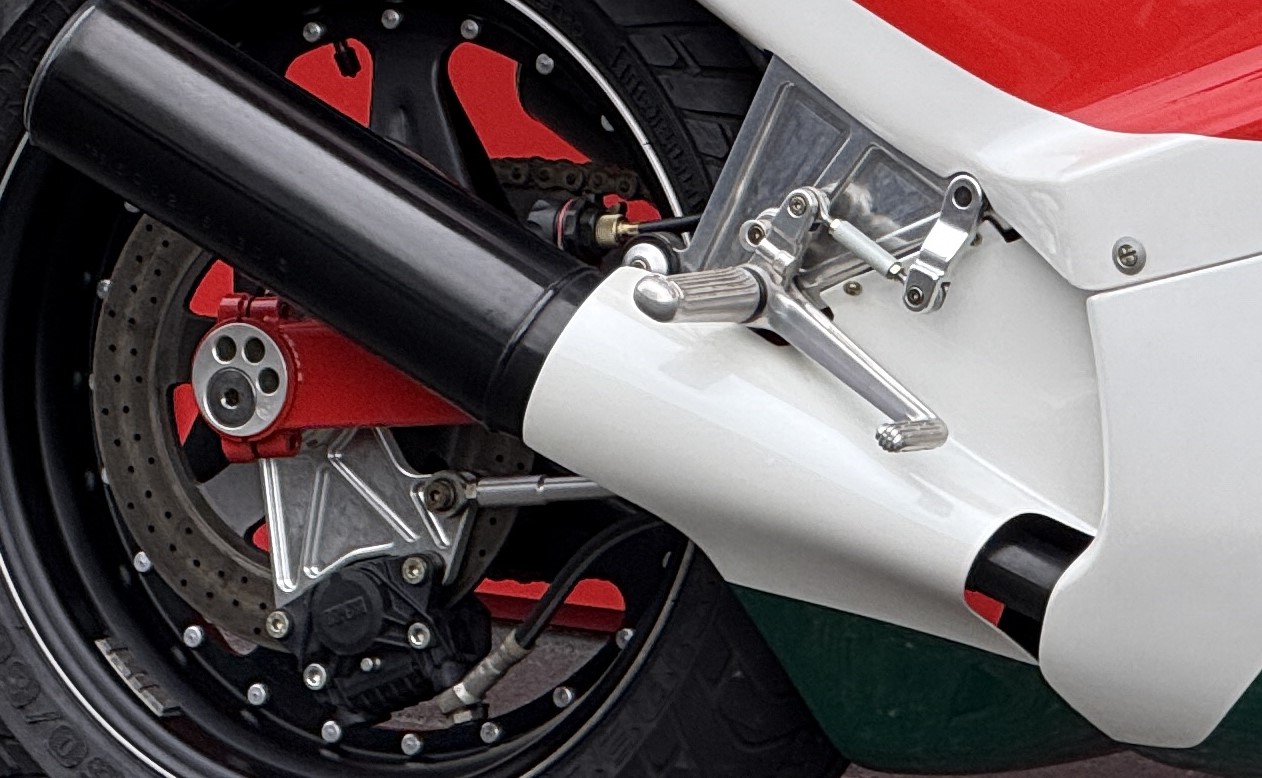
The described foot brake lever mechanism, including the forged footrests, brake lever, and mounting plates. Photo provided by Hans Leupi GmbH, Meggen, Switzerland
Around three quarters of the DB1s produced are sold in Japan, a market where motorcycles up to 400 cc are in great demand because they are cheaper to tax and insure. In addition, it is much easier to obtain a driving license than for motorcycles with a larger displacement. For these, in addition to a demanding practical test, you must provide proof that you are able to upright the motorcycle on your own when it is lying on its side.
Against this background, Bimota is even launching the DB1 400 J, a model built specifically for the local market for the first time. But its success is relatively low compared to the 750 models. A total of 53 examples are manufactured and delivered with the 45 hp engine of the 400 Ducati engine.
